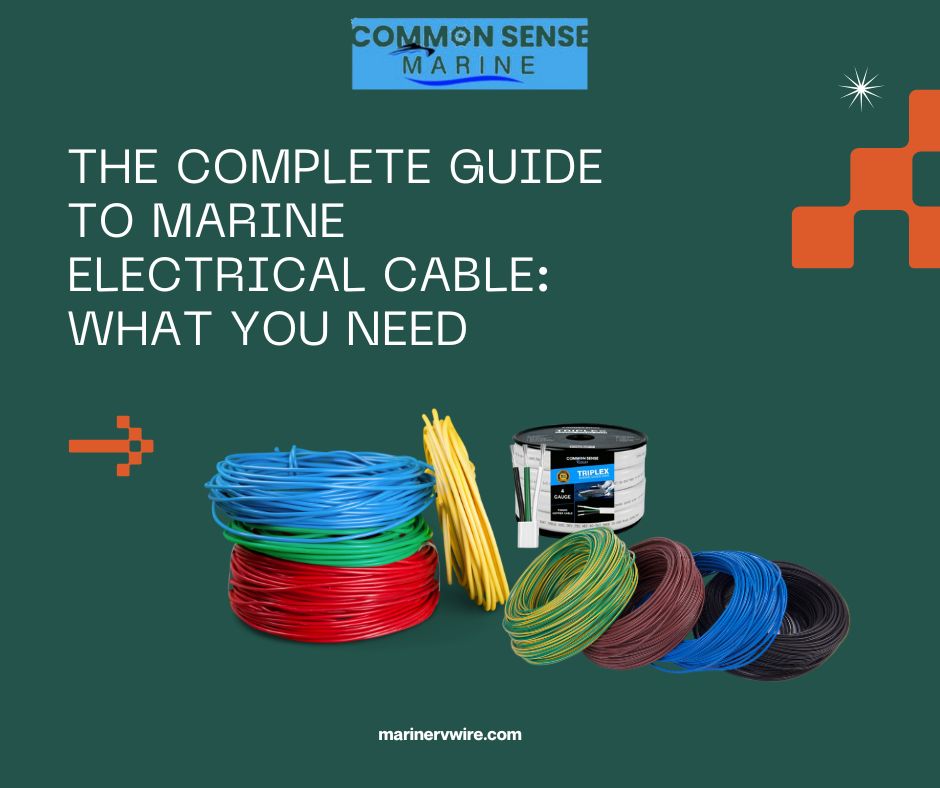
Marine electrical cables are the backbone of a boat’s electrical system, connecting everything from navigation lights to critical onboard equipment. Designed specifically for the harsh marine environment, these cables ensure safe and reliable power distribution. In this blog, we’ll cover everything you need to know about marine electrical cables, including their features, benefits, and how to choose the right one.
Why Marine Electrical Cable Matters
Marine environments present unique challenges, including exposure to moisture, salt, vibration, and temperature fluctuations. Ordinary electrical cables are not built to handle these conditions, making them prone to corrosion, failure, and potential safety hazards.
Marine electrical cables, however, are specially designed with robust materials and construction to withstand these elements, ensuring long-lasting performance and safety.
Key Features of Marine Electrical Cable
1. Corrosion Resistance
Marine cables use tinned copper conductors, which resist oxidation and corrosion caused by exposure to saltwater and humid conditions.
2. Flexible Construction
The wires are finely stranded, making them highly flexible for easy installation in tight spaces and ensuring durability in vibrating environments.
3. High-Quality Insulation
Marine electrical cables feature double or extra-thick insulation that resists abrasion, UV rays, and chemical exposure, providing enhanced protection in harsh conditions.
4. Heat and Flame Resistance
Many marine cables are designed to withstand high temperatures and meet flame-retardant standards, ensuring safety in case of electrical faults.
5. Standards Compliance
Reputable marine cables comply with ABYC (American Boat and Yacht Council) and UL (Underwriters Laboratories) standards, ensuring safety and performance.
Benefits of Using Marine Electrical Cable
1. Safety First
Marine cables reduce the risk of electrical fires and equipment failure, ensuring the safety of both passengers and the vessel.
2. Longevity
With corrosion-resistant properties and durable insulation, marine electrical cables last longer than standard cables, minimizing replacement costs.
3. Reliable Performance
By maintaining optimal conductivity and minimizing voltage drops, these cables ensure consistent performance for all electrical systems.
4. Easy Installation
Their flexible design and clear labeling make marine electrical cables straightforward to install, even in confined spaces.
How to Choose the Right Marine Electrical Cable
Selecting the right cable for your boat involves considering factors such as cable type, size, and environmental requirements.
1. Cable Type
- Primary Wire: Single-conductor wire used for general-purpose electrical connections.
- Battery Cable: Handles high-current loads from the battery to the electrical system.
- Duplex/Triplex Cable: Multi-conductor cable commonly used for running circuits in navigation lights, bilge pumps, and other systems.
2. Cable Size (Gauge)
The American Wire Gauge (AWG) determines the thickness of the cable. Thicker cables (with lower AWG numbers) carry more current and are suitable for high-load or long-distance applications.
- Short runs with low current: 16–14 AWG
- Medium runs or moderate current: 12–10 AWG
- Long runs or high current: 8 AWG or thicker
3. Voltage Rating
Ensure the cable is rated for the voltage of your boat’s electrical system, typically 12V, 24V, or 48V.
4. Environmental Factors
- Exposure to Water: Look for cables with waterproof or water-resistant insulation.
- UV Resistance: Ensure the insulation is UV-resistant for cables exposed to sunlight.
- Abrasion Resistance: Opt for cables with extra-durable insulation if they will be routed through areas prone to friction or impact.
5. Certifications
Check for compliance with ABYC, UL, or other marine-specific standards to ensure safety and reliability.
Installation Tips for Marine Electrical Cable
1. Plan Your Wiring Layout
Map out the cable routes to minimize unnecessary lengths and avoid sharp bends or tight angles.
2. Use Proper Connectors
Pair your cables with marine-grade connectors and terminals to ensure corrosion resistance and secure connections.
3. Protect Connections
Use heat-shrink tubing, electrical tape, or terminal boots to protect connections from moisture and corrosion.
4. Secure Cables
Fasten cables with cable clamps or ties to prevent movement caused by vibration, which can lead to wear or disconnection.
5. Test the System
Before finalizing installation, test all circuits for continuity, proper voltage, and load handling.
Common Mistakes to Avoid
1. Using Non-Marine Cables
Standard electrical cables may corrode or fail quickly in a marine environment, compromising safety and performance.
2. Underestimating Cable Size
Using cables that are too thin can lead to voltage drops and overheating. Always choose the right gauge for the load and distance.
3. Improper Connections
Loose or poorly protected connections can cause power loss, signal interference, or even electrical fires.
4. Ignoring Standards
Avoid uncertified cables, as they may not meet the rigorous demands of marine use.
Conclusion
Marine electrical cables are an essential component of a safe and efficient boat electrical system. With their robust design, corrosion resistance, and compliance with industry standards, these cables ensure reliable performance in harsh marine environments. By choosing the right type and size of marine electrical cable and following proper installation practices, you can enjoy trouble-free boating adventures for years to come.
Investing in quality marine electrical cables is not just a smart choice; it’s a crucial step toward ensuring the safety and longevity of your vessel’s electrical systems.